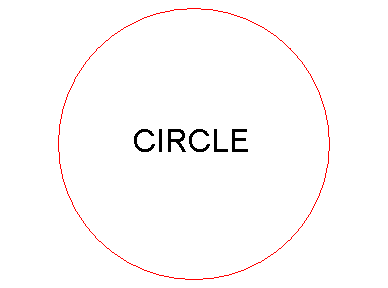
| next curve | previous curve | 2D curves | 3D curves | surfaces | fractals | polyhedra |

| Polar equation: r = R.
Cartesian equation: Conic. Cartesian parametrization: Rational Cartesian parametrization: Curvilinear abscissa: Tangential polar angle: Radius of curvature, intrinsic equation 1: Intrinsic equation 2: General Cartesian equation: Cartesian equation of the circle with centre Cartesian parametrization: Polar equation: Length: 2pR; area: |
A circle is the locus of the points at equal distance from a fixed point. It can be defined as "circular conic" or "non-degenerate conic with zero eccentricity", or "curve with constant curvature and zero torsion".
The curves with constant normal (N = const., cf. notations) are the circles with centre on Ox (and the lines parallel to Ox).
Given two distinct points A and B, the locus
of the points M such that the angle between the lines MA
and MB is constant is a circle for which [AB] is a chord
(isoptic of the segment line [AB]).
|
The locus of the points M satisfying Therefore, the circle of Apollonius also is the locus of the points M seeing the segment lines [AI] and [BI] with the same angle ((MA,MI)=(MI,MB)); the same holds for [AJ] and [BJ]. See this website. NB: do not mistake this for the Apollonius circles associated to 3 circles (see below).
|
 |
| When k varies, these circles form a pencil
of circles with limit points A and B; the conjugate
pencil is the set of all circles passing through A and B
(called "intersecting pencil", A and B being the intersection
points) and each pencil is the set of all the circles orthogonal to one
of the circles of the other pencil.
This figure can be interpreted as the electrostatic or
magnetic field lines; see here.
|
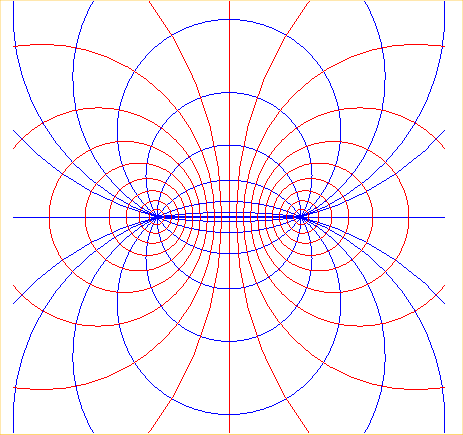 |
| The circle also is the solution of the isoperimetric
problem: finding the simple closed curve of given length that encloses
the maximal area (or of minimal length for a given area).
Similarly, the arc of a curve of given length L, joining two given points A and B, traced on a half-plane delimited by (AB), and enclosing the largest area in this half-plane is one of the two arcs of a circle of length L joining A and B (to be checked: if one looks for the area for which the gravity centre is the furthest from (AB), the answer now is an arc of a catenary). |
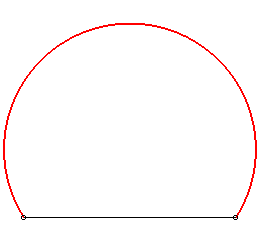 |
|
Another famous problem concerning circles, already posed by Apollonius, is that of determining the circles tangent to 3 given circles. In general, they are 8 solutions as in the examples opposite, but only 2 when the 3 circles are tangent to one another (see Apollonian gasket). |
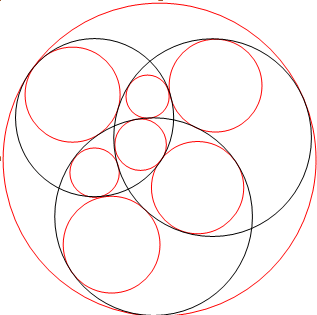 |
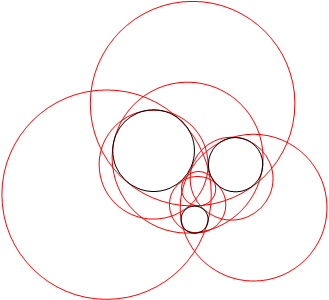 |

Squaring the circle by morphing...
| next curve | previous curve | 2D curves | 3D curves | surfaces | fractals | polyhedra |
© Robert FERRÉOL 2017